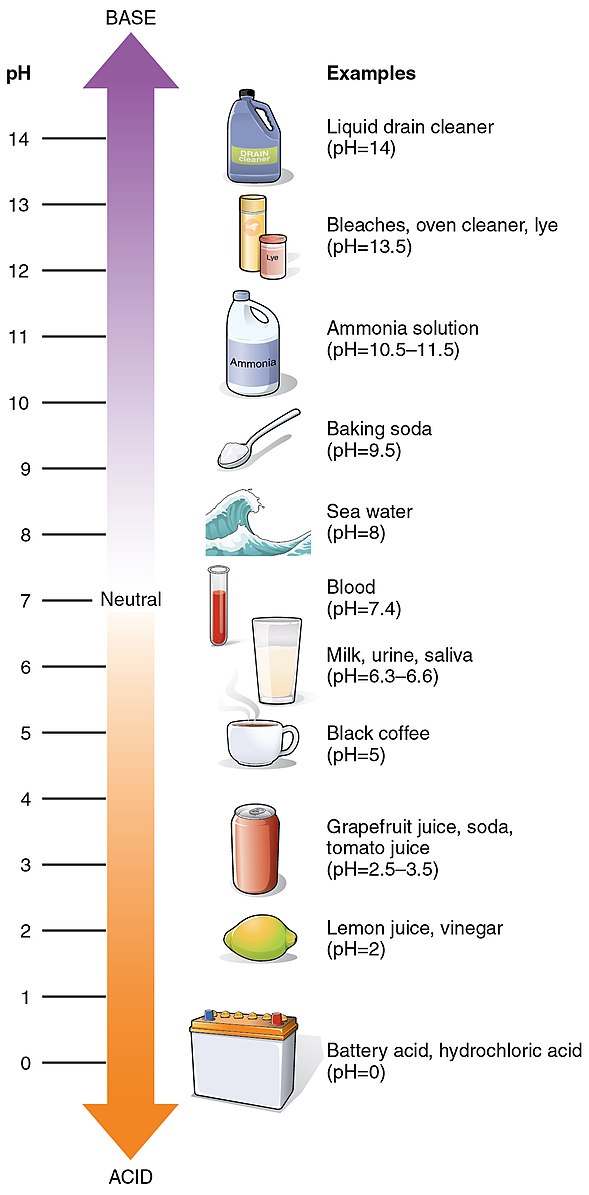The pH value of water in cells, also known as intracellular pH, typically ranges from 6.8 to 7.2, slightly more acidic than the neutral pH of 7.0. Maintaining this pH range is crucial for the proper functioning of cells, as changes in pH can affect protein structure, enzyme activity, and other biochemical reactions.
Understanding the Importance of Intracellular pH
Cells are the fundamental units of life, and the pH of the water within them plays a critical role in their overall health and function. The intracellular pH is tightly regulated by various mechanisms, as even small deviations can have significant consequences.
The Role of pH in Cellular Processes
-
Protein Structure and Function: The pH of the cellular environment directly impacts the structure and function of proteins. Changes in pH can cause proteins to denature, altering their shape and disrupting their ability to perform their intended roles.
-
Enzyme Activity: Enzymes, which are essential for catalyzing biochemical reactions, are highly sensitive to pH changes. Optimal enzyme activity is typically achieved within a specific pH range, and deviations from this range can lead to reduced efficiency or even complete inactivation.
-
Membrane Transport: The pH gradient across cell membranes is crucial for the transport of ions and other molecules into and out of the cell. Disruptions to this gradient can impair the cell’s ability to maintain homeostasis and perform essential functions.
-
Energy Production: The pH of the cellular environment is closely linked to the production of energy through processes like cellular respiration and ATP synthesis. Maintaining the appropriate pH is necessary for the efficient conversion of nutrients into usable energy.
Mechanisms for Regulating Intracellular pH
 Image source: OpenStax College
Image source: OpenStax College
The body has several mechanisms in place to help maintain the pH of water in cells within the optimal range of 6.8 to 7.2.
The Role of the Kidneys
The kidneys play a crucial role in regulating the pH of the body’s fluids, including the water within cells. They accomplish this through the following processes:
- Bicarbonate Reabsorption: The kidneys reabsorb bicarbonate (HCO3-) from the filtrate, which helps neutralize excess acid in the body.
- Acid Excretion: The kidneys also excrete fixed acids, such as sulfuric acid and phosphoric acid, which can accumulate in the body and lower the pH.
The Contribution of the Lungs
The lungs also contribute to the regulation of pH by adjusting the amount of carbon dioxide (CO2) expelled from the body. Carbon dioxide is a byproduct of cellular respiration and can form carbonic acid (H2CO3) in the body, which can lower the pH.
- CO2 Removal: By increasing or decreasing the rate of respiration, the lungs can adjust the amount of CO2 expelled, thereby influencing the formation of carbonic acid and the overall pH balance.
Cellular Buffering Systems
In addition to the kidneys and lungs, cells themselves have intrinsic buffering systems that help maintain their internal pH. These systems involve the use of various compounds, such as proteins, phosphates, and bicarbonate, to neutralize excess acids or bases within the cell.
The Impact of Contaminants and Chemicals on Intracellular pH
While the body has mechanisms in place to regulate the pH of water in cells, certain contaminants and chemicals can still affect this delicate balance.
Heavy Metals and pH
Heavy metals, such as lead, mercury, and cadmium, can be particularly problematic when it comes to the pH of water in cells. These metals tend to be more toxic when the pH is lower, as they become more readily available for absorption by the body.
To address this issue, it is essential to ensure that the water supply is free from heavy metals and other contaminants. This can be achieved through the use of water filters and other purification methods.
Alkaline Water and Digestive Health
While the pH of drinking water is not directly related to the pH of water in cells, some individuals may benefit from consuming alkaline water with a pH higher than 8.5. This type of water can help neutralize stomach acid and reduce inflammation, which may be beneficial for those with digestive conditions like irritable bowel syndrome (IBS).
Conclusion
Maintaining the proper pH of water in cells is crucial for the overall health and function of cells. The body has several mechanisms in place, including the kidneys and lungs, to help regulate this delicate balance. However, it is important to be aware of the potential impact of contaminants and chemicals on intracellular pH, and to take steps to ensure the purity of the water supply.
By understanding the importance of intracellular pH and the factors that can influence it, individuals can take proactive steps to support their cellular health and overall well-being.
References:
– Medical News Today – What is the pH of cells?
– NCBI – Regulation of Intracellular pH
– Lumen Learning – The pH Scale
